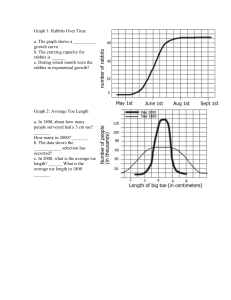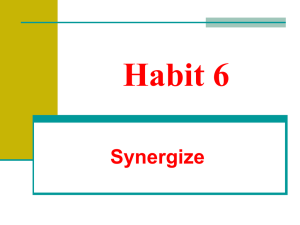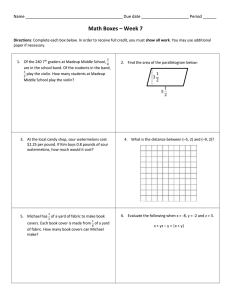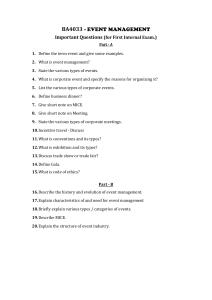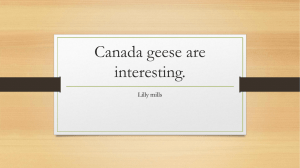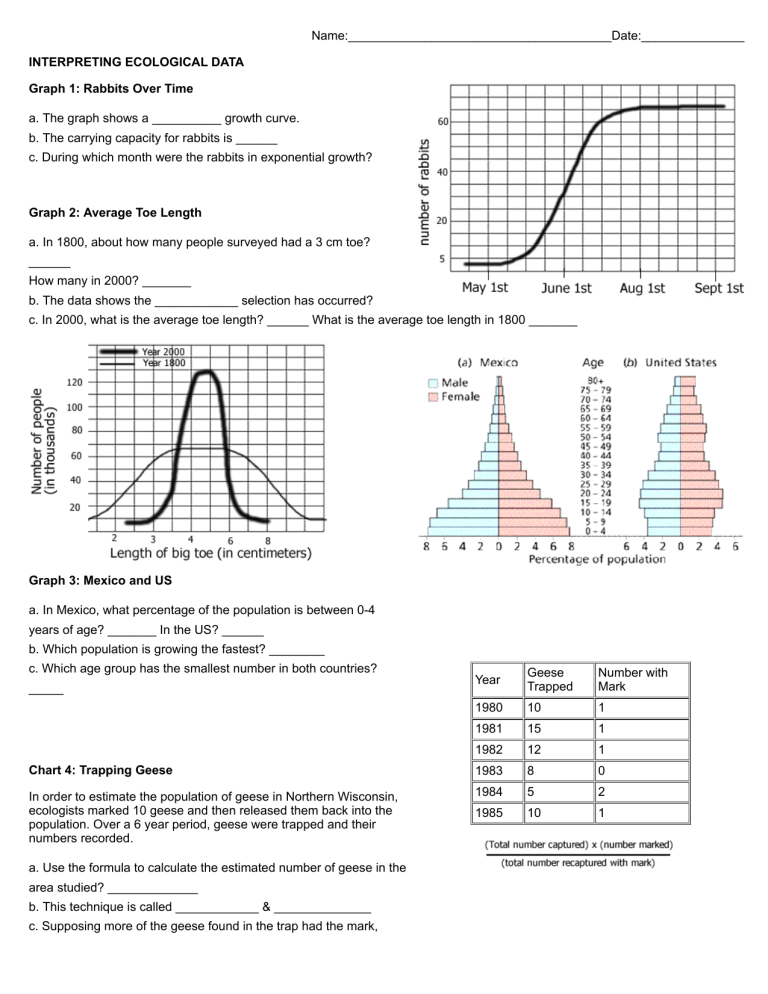
Name:______________________________________Date:_______________ INTERPRETING ECOLOGICAL DATA Graph 1: Rabbits Over Time a. The graph shows a __________ growth curve. b. The carrying capacity for rabbits is ______ c. During which month were the rabbits in exponential growth? Graph 2: Average Toe Length a. In 1800, about how many people surveyed had a 3 cm toe? ______ How many in 2000? _______ b. The data shows the ____________ selection has occurred? c. In 2000, what is the average toe length? ______ What is the average toe length in 1800 _______ Graph 3: Mexico and US a. In Mexico, what percentage of the population is between 0-4 years of age? _______ In the US? ______ b. Which population is growing the fastest? ________ c. Which age group has the smallest number in both countries? Year Geese Trapped Number with Mark 1980 10 1 1981 15 1 1982 12 1 Chart 4: Trapping Geese 1983 8 0 In order to estimate the population of geese in Northern Wisconsin, ecologists marked 10 geese and then released them back into the population. Over a 6 year period, geese were trapped and their numbers recorded. 1984 5 2 1985 10 1 _____ a. Use the formula to calculate the estimated number of geese in the area studied? _____________ b. This technique is called ____________ & ______________ c. Supposing more of the geese found in the trap had the mark, would the estimated number of geese in the area be greater or lesser? _____ Chart 5: Mushroom Plots Another ecologist uses a different method to estimate the number of mushrooms in a forest. She plots a 10x10 area and randomly chooses 5 spots, where she counts the number of mushrooms in the plots and records them on the grid. a.Calculate the number of mushrooms in the forest based on the grid data: _________________ b. Thie technique is called _______________ Chart 6: Snakes & Mice Year Snakes Mice born Mice died 1960 2 1000 200 1970 10 800 300 growth? ______ 1980 30 400 500 b. What is the carrying capacity for snakes ? ______ 1990 15 600 550 c. What is the carrying capacity for mice? _____ 2000 14 620 600 d. What is the rate of growth (r) for mice during 1970? _____ During 2001 15 640 580 The data shows populations of snake and mice found in an experimental field. a. During which year was the mouse population at zero population 1980? ______
